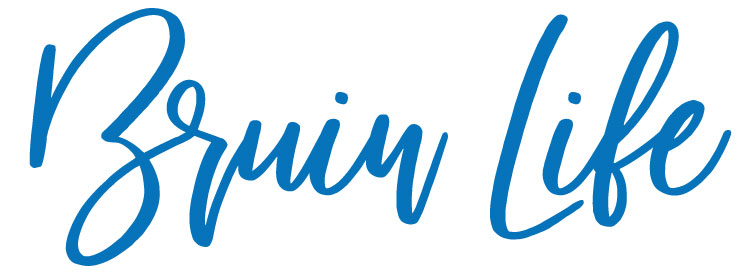Ramadan, the sacred month in the Islamic calendar, prompts considerable changes in the daily routines of millions of people around the world. It’s a time for spiritual reflection, self-discipline and a stronger bond with faith. Ramadan provides a unique set of challenges and opportunities for those who strive to strike a balance between their physical fitness goals and religious obligations. This month’s intersection of physical health and spiritual well-being provides a holistic approach to fitness that goes beyond the confines of traditional workouts and embraces a more mindful and adaptable regimen.
Embracing mindful movement
During the holy month of Ramadan, the emphasis on physical activity shifts subtly to maintaining strength and shape rather than aggressive muscle building. This period requires a gentle approach to exercise that complements the spiritual and reflective nature of fasting, ensuring that the primary focus remains on deepening one’s faith and religious practices. Mindful movement, such as yoga, Pilates and low-intensity weightlifting, provides a balanced approach, allowing people to maintain their physical well-being while participating in the spiritual journey of Ramadan.
Yoga is an excellent practice during this time, with its various styles catering to both strength and flexibility while encouraging mindfulness. Hatha and Yin yoga are gentle forms of yoga that emphasize slow movements, deep stretching and focused breathing, which help to maintain muscle flexibility and mental calm. The reflective nature of these practices matches the introspective atmosphere of Ramadan, inviting individuals to explore the relationship between physical well-being and their spiritual state, thereby supporting both their physical form and spiritual growth.
Pilates complements Ramadan’s spiritual goals by concentrating on core strength, movement and alignment through deliberate, controlled movements. This discipline activates the body’s stabilizing muscles, which help to maintain shape and functional strength without the intensity of heavy lifting or high-impact exercises. Pilates’ required precision and concentration are aligned with the mindfulness cultivated during Ramadan, making it an ideal addition to one’s fitness routine during this holy month.
Low-intensity weightlifting caters to Ramadan’s needs by promoting lower reps with moderately reduced weights, making it easier and more feasible to engage and stimulate the muscles without causing excessive exertion. This approach to strength training is ideal for the fasting period because it takes into account the body’s energy and nutritional requirements. Low-intensity weightlifting transforms into a form of mindful exercise by focusing on maintaining muscle tone rather than building muscle, adhering to the repetitive and meditative aspects of Ramadan spiritual practices.
Strategic timing and hydration for Ramadan fitness
The unique daily structure of Ramadan, with fasting from dawn to dusk, necessitates understanding the best timing for exercise, and the importance of hydration becomes crucial. Two key windows are generally considered ideal for exercising while fasting:
Pre-Suhoor workouts
Exercising before a pre-dawn meal can be beneficial for those who find clarity and calm in the quiet of the early morning. This time is ideal for a light to moderate workout, such as a brisk walk, gentle yoga or low-intensity weightlifting, followed by immediate replenishment at Suhoor. This not only aids in hydration and nourishment, but it also jumpstarts the metabolism, providing consistent energy throughout the fasting day.
Post-Iftar workouts
After breaking the fast at Iftar, the body is refueled with food and drink, making it an ideal time for more demanding physical activity. Exercises like weightlifting, Pilates and cardio are more comfortable to do now that the body has been replenished. It is recommended to allow for a brief digestion period following Iftar to ensure comfort and effectiveness during the workout, utilizing the energy from the evening meal to improve physical performance without discomfort.
Maximizing evening hydration
The evening hours from Iftar to Suhoor provide an excellent opportunity to hydrate the body. To avoid discomfort, it is critical to drink water steadily throughout the night rather than in large amounts in a short period. Adding hydrating foods like cucumbers, watermelons and smoothies to your evening meals can help you stay hydrated.
Nourishment for sustained energy in Ramadan
Providing the body with high-protein, balanced meals during Suhoor and Iftar is critical for maintaining energy throughout Ramadan’s fasting hours and promoting recovery from your workouts or physical activity. A pre-dawn meal high in proteins from eggs, yogurt or legumes, combined with complex carbohydrates like oats or whole grains and healthy fats from avocados or nuts, promotes a slow release of energy and satiety. At Iftar, breaking the fast with quick-energy foods like dates, followed by a balanced meal centered on lean proteins like grilled chicken or fish accompanied by whole grains and vegetables, replenishes the body without overwhelming it. This approach to nutrition keeps energy levels steady, supports muscle maintenance and aligns with the mindful movement and spiritual reflection that Ramadan signifies, ensuring a balanced well-being that nurtures both body and soul.
Ramadan presents a unique opportunity to combine physical goals with spiritual commitment, resulting in a period of powerful personal development and contemplation. Individuals can honor their bodies and their religious commitments at the same time by engaging in both physical and mental practices that enhance their soul’s well-being. This sacred month emphasizes the importance of listening to our physical and spiritual needs, adapting our routines to maintain our physical and mental wellness, and deepening our faith. Ramadan cultivates discipline and mindfulness, which serve as a foundation for respecting our personal goals and religious practices, demonstrating that true wellness encompasses both physical health and spiritual fulfillment.
—
Featured Illustration via Adobe Stock

